A step-by-step guide on how aeration significantly boosts your lawn’s health and promotes lush growth and resilience. I will share insights on the techniques, benefits, and timing for best results.
Improve Lawn Health with Aeration Tips: Essential Guide
Everyone loves having and seeing a lush, green lawn, but not enough people understand how healthy lawn care practices help achieve this look.
If you’re here, you want ideas to improve lawn health without harming your environment.
Many healthy lawn maintenance routines cover basics like watering and mowing, but leave out sophisticated practices like aeration. With proper lawn aeration tips, you’d boost your lawn’s health, promote lush growth, and build resilience.
This guide helps you to understand the techniques, benefits, and timing for the best aeration results.
Understanding Lawn Aeration: Why It Matters

Let’s start with the basic questions like “what is lawn aeration?” and “why is aeration important for healthier lawn growth?”
Lawn aeration is the process of perforating holes in the soil to allow better absorption of air, water, and nutrients. It’s a crucial routine, especially for lawns with high foot traffic or heavy clay soil.
Depending on size and compaction severity, you can aerate your soil manually or with specialized machinery.
When you think of the benefits of aeration, equate it to giving your lawn a breath of fresh air. It’s one of the few loosening soil compaction solutions that creates pathways for stronger and deeper root growth.
Top Benefits of Regular Lawn Aeration
Let’s dig deeper into the details of key lawn aeration benefits.
Nutrient Absorption
Better nutrient absorption is the primary and most significant aeration impact on grass health because it opens the floor for other benefits. When the soil gets enough nutrients, whether it’s from air, water, sunlight, or fertilizers, your lawn grows adequately.
Stronger Root System
If heavy foot traffic makes your lawn’s soil compact and hard, aeration solves that problem by loosing the soil and encouraging better root growth. The root system penetrates deeper through the soil and withstands stress.
Reduced Thatching
Aeration also helps in reducing lawn thatch build-up. With less dead grass and roots suffocating the soil, there’ll be newer and healthier growth consistently.
Improved Resilience
Most importantly, combining these benefits leads to overall improved lawn resilience. You’ll notice that it gets an energetic boost after aerating your lawn.
How to Identify If Your Lawn Needs Aeration

Before saving the day with these lawn maintenance tips, you must recognize a problem. The next step is identifying signs that a lawn needs aeration.
When diagnosing lawn problems, look for clear indicators showing poor grass health. For aeration-related issues, these compacted soil symptoms are the most significant signs:
- Water pooling
- Uneven grass growth
- Patches
- Thick thatch layers
If your thatch layer is over an inch thick, that’s a problem. If water pools after rain instead of drying, or your grass feels spongy, you need aeration.
Choosing Between Core and Spike Aeration
Once you’ve accepted that your soil needs perforation, your next step is choosing an aeration method. Depending on your goal, there are two main soil aeration techniques.
Core vs Spike Aeration
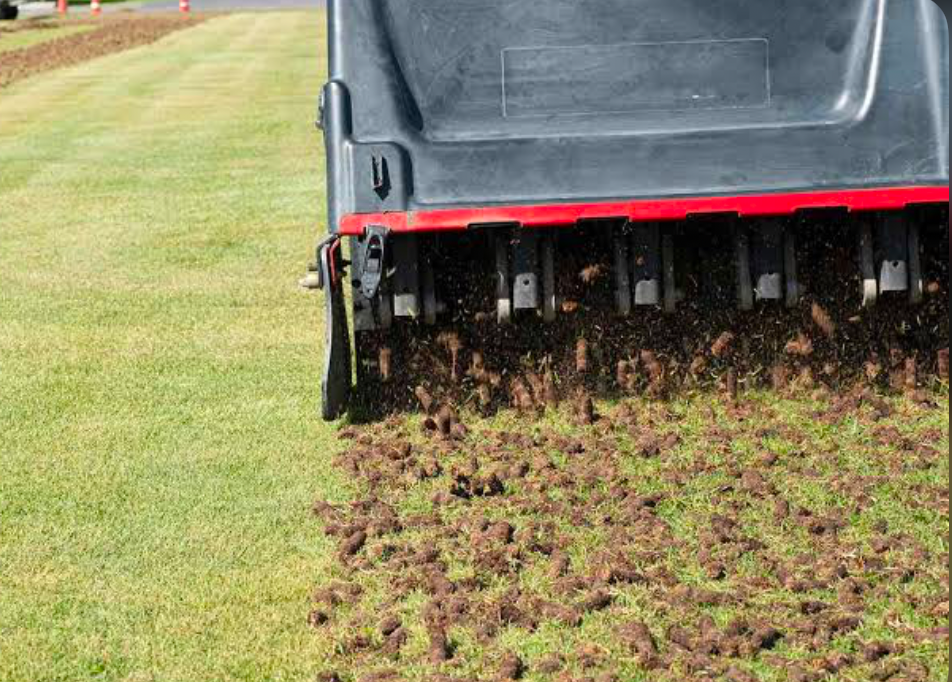
Core aeration removes plugs of soil from the ground, while spike aeration pokes holes through the soil. Over time, gardeners crowned the core system as the more effective aeration method because it allows maximum airflow and opens up extensive compaction.
Author’s Note: Check out our post Aerating Your Lawn with A Core Aerator for a complete guide on how to use core aeration to create a vibrant and thriving yard!
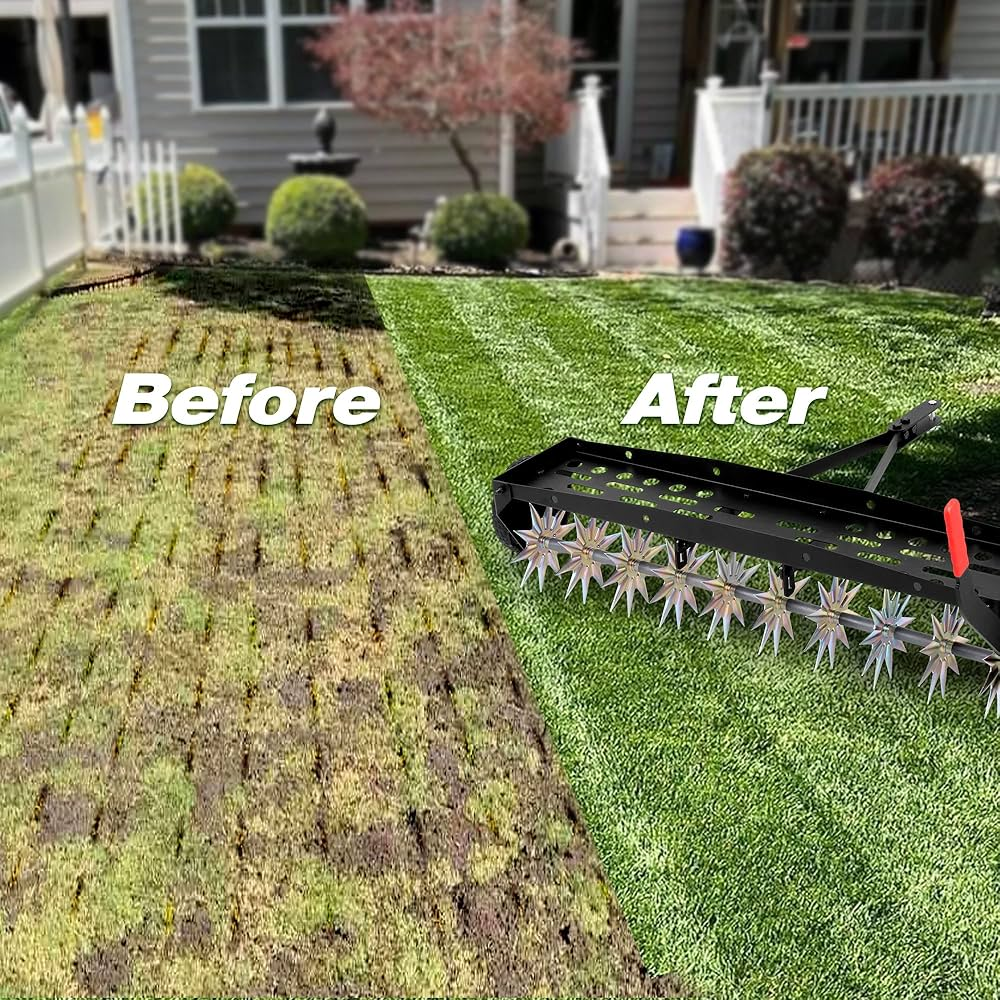
Both Core and Spike systems are effective aeration methods, and your choice should depend on your lawn’s size and the thickness of soil compaction.
Ideal Times for Aerating Your Lawn
Ideally, the best time for aeration is during your lawn’s growing season, which differs based on several factors.
For seasonal lawn aeration, you must consider your grass types, climate, and weather changes for optimal results.
We’ll start timing lawn maintenance according to the grass type.
| Grass Type | Aeration Time |
| Cool-Season Grass | Early Spring/Early Fall |
| Warm-Season Grass | Summer |
Next, consider weather conditions and wait for a moderately moist season. So, avoid drought and heavy rainfall. If possible, wet the lawn before aeration if it’s not raining. Use these aeration scheduling tips as a guide, then modify them based on your circumstances.
Step-by-Step Lawn Aeration Guide
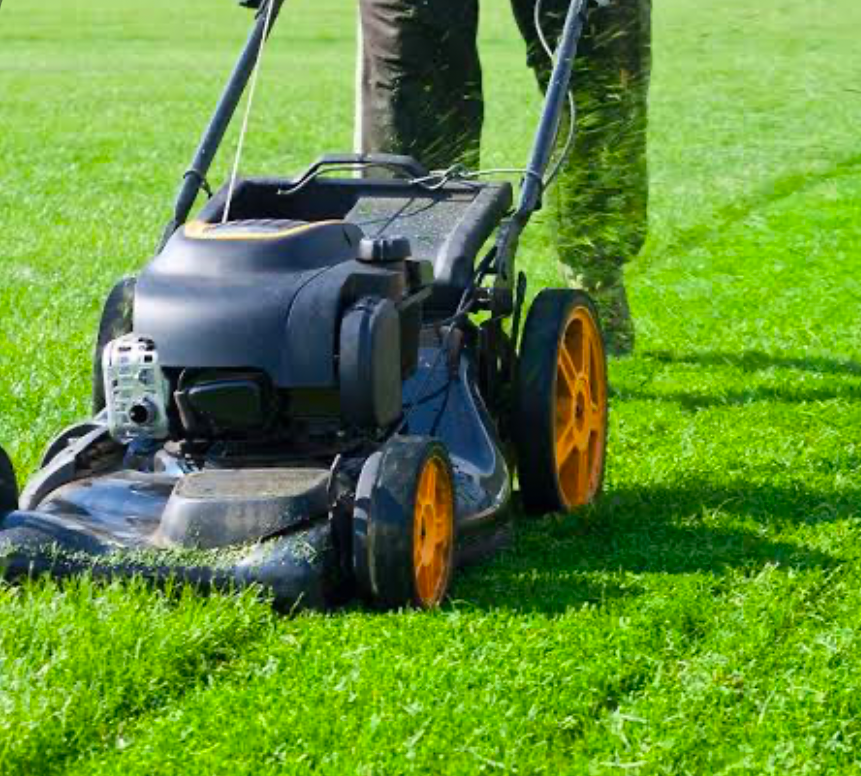
If you plan on DIY lawn aeration, you still have work to do before the main action. Don’t worry if you’re a beginner, after this aeration step-by-step guide, you’d feel like a pro.
Follow these lawn preparation tips, including safety measures, and finish with proper aftercare for efficient aeration.
Step One: Mowing
Mow your lawn to a shorter height, about one inch above the soil, for easy access.
Step Two: Markings
Boldly mark your fixtures, including sprinkler heads, underground cables, and hoses, to avoid damage.
Step Three: Choose Method
Are you using a core or spike aeration method? Scroll up to see the difference and how each one benefits your soil.
Step Four: Aerate
Sharpen your aerator and work in parallel rows. Then double back and overlap for even distribution.
If you choose a core aeration system, leave the plugs on the surface to break down nutrients and replenish your perforated soil.
Step Five: Aftercare
Try natural lawn care practices like overseeding, mulching, and fertilization to protect your exposed soil from the elements and encourage better nutrient absorption.
With this aeration process explained, you can proceed to choosing your equipment.
Selecting the Right Aeration Equipment
You have a wide range of lawn aeration tools to choose from, depending on the method you use.
Like you did with your aeration system, when choosing aeration gear, you must consider certain factors like lawn size, compaction density, and budget.
Small Lawns
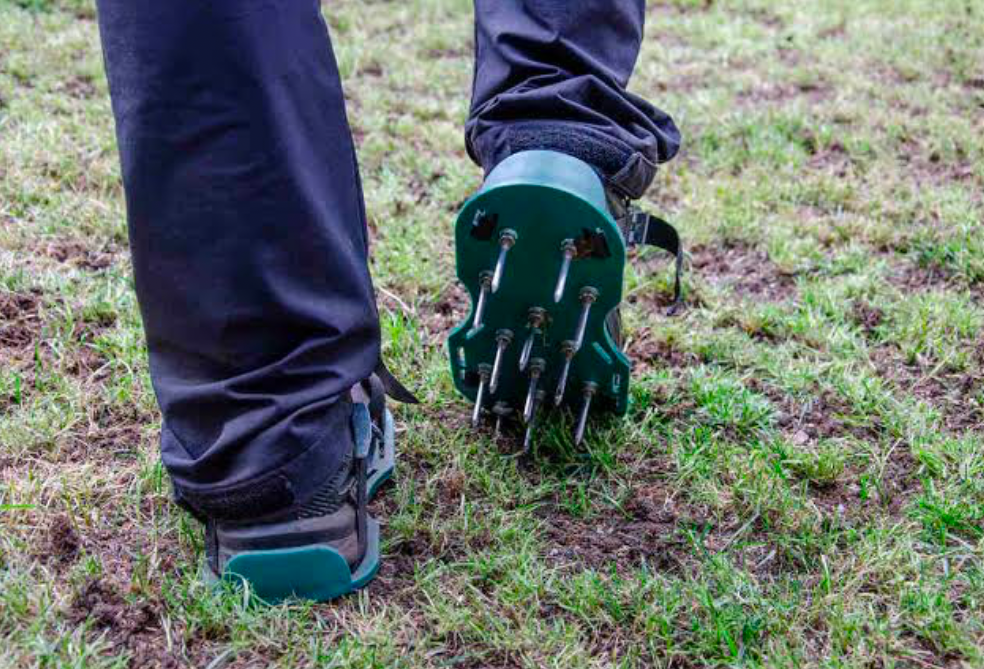
For small lawns with medium compaction, a manual aerator works fine. It could be footholds like spiked shoes or handheld tools like hand-powered aerators, rakes, or garden forks.
Large Lawns
On the other hand, the best aeration equipment for extensive lawns with thick compaction is powered or pull-behind core system tools.
If budget is a significant factor when you weigh manual vs powered aerators, consider renting instead of buying. Or better yet, hiring a professional.
Post-Aeration Lawn Care Essentials
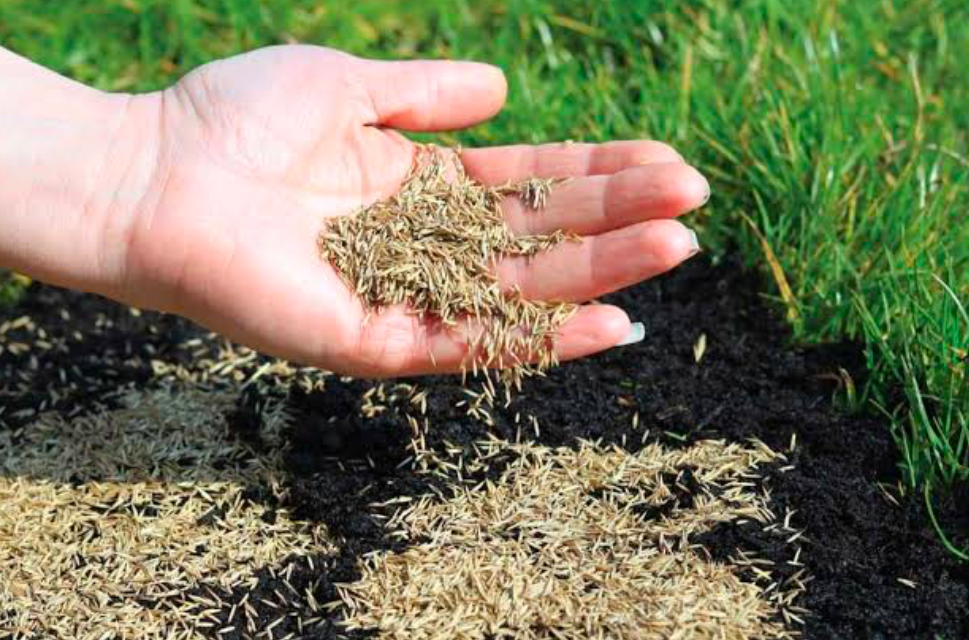
I know you want to relax, but you can only do that after a proper post-aeration lawn care. Don’t just leave your soil with holes and hope for the best. Remember step five of this aeration guide, aftercare.
Let’s dig deeper into post-aeration practices for protecting your newly aerated areas.
Watering
Help your newly exposed soil regain moisture by watering after aeration.
Fertilizing
You can replenish lost nutrients by fertilizing an aerated lawn and keeping foot traffic to a minimum within one to two weeks of aeration.
Overseeding
Fill in bare spots by overseeding the lawn.
Author’s Note: Check out our post on Overseeding for a Thicker Lawn Made Easy for a complete guide to using overseeding as post aeration lawn care!
With these watering, fertilizing, and overseeding tips, you’ll get maximum results from your aeration process.
Common Lawn Aeration Mistakes to Avoid
Before we close this guide, here are some aeration mistakes and common lawn care errors that can ruin your hard work.
- Inadequate preparation
- Incorrect timing
- Improper soil moisture levels
Don’t skip any step for adequate application, including timing, mowing, marking, choosing a proper aeration technique, watering, and other aftercare.
Thinking the rules in this guide are suggestions is how you fall into these lawn aeration pitfalls. So, follow everything to the letter.
FAQs: Everything You Want to Know About Lawn Aeration
You shouldn’t have problems with aeration and lawn health by now, but you may still have some burning questions. So here are answers to lawn aeration FAQ about frequency, DIY vs professional aeration, and how aeration helps overall lawn health.
How Often Should I Aerate My Lawn?
The answer to how often to aerate your lawn is once or twice yearly. It depends on foot traffic and your soil type. The denser the compaction and the heavier the traffic, the more you should aerate.
Can I Aerate My Lawn Myself?
Professional vs DIY aeration is an old-time debate, especially when you have a slim budget. DIY aeration works for small and extensive lawns, depending on the tools you get. Rent a high-power aerator for expansive lawns if you cannot buy one.
Is Fertilization After Aeration Necessary?
Most times. Your lawn won’t suffer if you don’t fertilize it after aeration, but doing so would boost new growth and produce a healthier lawn.
Will Aeration Help A Thatch Problem?
Yes! Reduced thatching is one of the benefits of aeration because it efficiently breaks down microbes and nutrients.
Conclusion: Aeration’s Lasting Benefits for Your Lawn
As we close the curtain on this guide, you can now agree that aeration is a lawn health investment strategy.
The long-term aeration benefits are too good to pass up when you weigh them against not doing it. Add aeration to the roster if you care about a vibrant lawn maintenance routine that builds a resilient ecosystem. It’s not a one-time fix but a part of a larger ongoing lawn care tips that repairs, replenishes, and boosts lush lawns.
So, get out there, roll up your sleeves, and plug your soil for better lawn growth.



2 thoughts on “Improve Lawn Health with Aeration Tips: Your Complete Guide to a Vibrant and Thriving Yard”